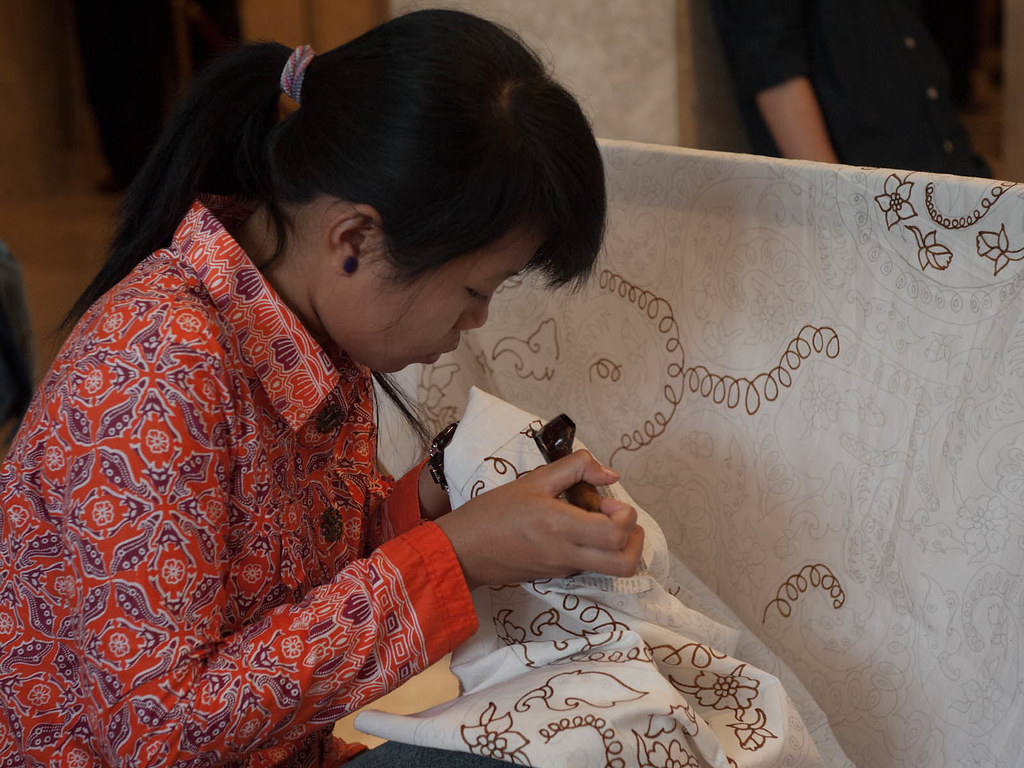By Ahmad Cholis Hamzah
A senior author of Good News from Indonesia
==
It is already publicly or widely known that batik is the traditional outfit in Indonesia, but not all have adequate knowledge that batik is grounded on the philosophy of spiritual discipline and is an integral part of Javanese art – a tradition that goes back hundreds years ago to the era of kingdoms on Java Island. It is an old tradition of craftsmanship techniques passed down from generation to generations.
In general common people maybe merely recognize the beauty of Batik for its design, motif and color. However, the beauty of Batik also lies in the deep philosophy which is embedded in it and apparent in the Batik making process. To make Batik, it will take a long step which is started by drawing a motif on a sheet of calico – a plain sheet of fabric. Batik motif can be either simple or complex and complicated, it depends on the Batik painter’s preference or order from consumers. A challenge will come up when a Batik painter choose to draw the complicated ones involving a very delicate pattern. The Batik painter must be imaginative and skillful in drawing the motif. Then, the motif drawn will be painted with wax, using a special wax dropping tool called canting.
Lesson learned from such a long process is that batik nurtures creativity, patience, discipline, deep feeling of art and dedication since it involves very detailed patterns such as small lines and curves. The philosophy of Batik could be seen deeply inside the motif which is varied depends on the region where some Batik motifs grow. Yogyakarta for example has its own motifs (and color), so do Pekalongan in Central Java and Sidoarjo in East Java.

Batik historians said that the variety of Batik motifs is related to the history of Javanese society. In the past, there were some Batiks which were only for king and his royal family, such as Parang Rusak Barong, Udan Riris, Semen, and Cemungkiran. Those motifs were classified as forbidden motifs, meaning restricted for being worn by common people. For instance, Parang Rusak which is formed of ornament of flame refers to the symbol of anger and ornament of water (Blumbangan or Mlinjon) symbolizes good desire. Parang Rusak has meaning about victory in the fight against evil mind where people are able to control their prurient so they have good temper, character and can behave nicely.
Some world prominent figures such as Mr. Paul Wolfowitz former U.S Ambassador to Indonesia and president of the World Bank, Ms. Maya Suntoro - sister of former U.S president Barack Obama and Mr. Nelson Mandela love batik and they have collections of beautiful batiks. Regarding Mandela, people are wondering on the story when he loved batik very much. It was back in 1997, this former South African president stunned the late former Indonesian President Suharto when he visited Indonesia. Suharto welcomed Mandela who wore a formal suit while Mandela, surprisingly, greeted the former president wearing a batik shirt. When Mandela, first received his batik shirt as an official souvenir, from this very moment he immediately fell in love.
Batik’s popularity soared in 2009 when former President Susilo Bambang Yudhoyono called on Indonesians to wear batik following its inclusion by UNESCO in the Intangible Cultural Heritage of Humanity list. And now Indonesians and foreigners including foreign high ranking officials love wearing batik outfits for casual or formal events.




















